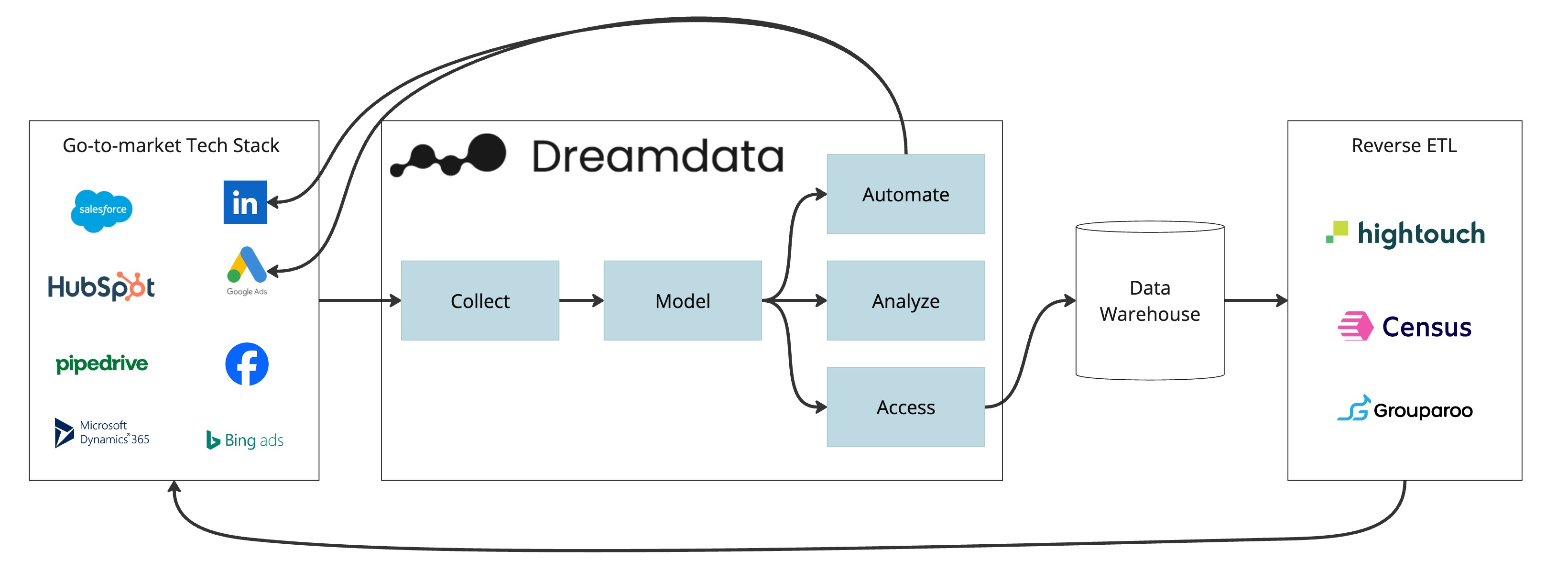What is Reverse ETL?
What is Reverse ETL?
Reverse ETL takes transformed data from a data warehouse and syncs it back into business teams' tools and applications. This allows teams to access and utilize valuable insights within their preferred platforms, such as CRM systems, marketing automation tools, or customer support platforms.
Since Dreamdata has already collected, transformed, cleaned, and modeled all your go-to-market data, you already have a Data Warehouse with clean, ready-to-use data.
A Reverse ETL tool might help you act on the data, very much like Dreamdata already does with Synchronisation to LinkedIn Matched Audiences, LinkedIn Conversions, Google Ads Customer Match, and Google Ads Enhanced Conversions for new use cases that are not yet natively within Dreamdata.

Setup Data Warehouse
First, you set up a Data Warehouse to use a Reverse ETL with Data from your Dreamdata setup.
Setup AWS Redshift using AWS S3
Use Cases of Reverse ETL
Reverse ETL finds applications across various business functions:
- Marketing: Personalize marketing campaigns, for example, by sending audiences built within Dreamdata to your marketing automation tool to target and personalize.
- Sales: Enrich CRM data Signals, build lead scoring, or ensure all Revealed companies are available to your sales teams.
- Ads/ABM: Share audiences and conversions to Ad and ABM platforms Dreamdata does not yet natively support.
Choosing a Reverse ETL Tool
There are multiple Reverse ETL tools; here are a couple you should consider.
- Census offers a free plan allowing you to implement one or two use cases on top of the Dreamdata Data Warehouse.
- Hightouch offers a free plan that allows you to implement one or two use cases on top of the Dreamdata Data Warehouse.
- Grouparoo is an Open-Source solution for companies that prefer to self-host. It also offers hosted solutions.
